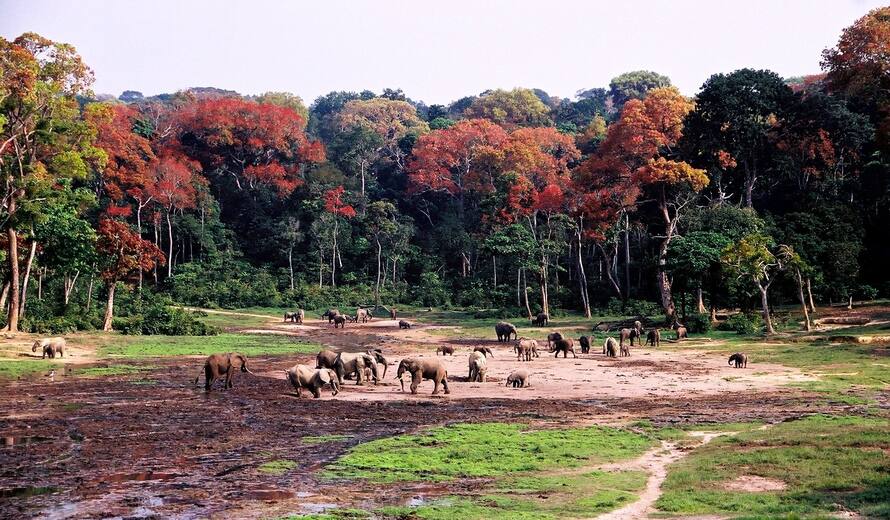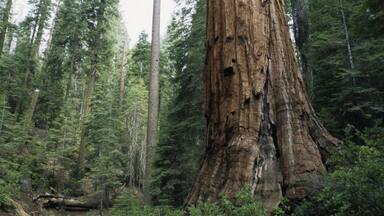International Day of Forests 2023
Forests are some of the most biodiversity-rich habitats on Earth and contain 60,000 different tree species and more than 70% of all animal terrestrial species. Forests also play a crucial role in climate regulation and their protection is among the most cost-effective ways to push climate action. Forests fuel our economies and provide invaluable ecosystem services, being vitally important for human well-being and survival. It is estimated that around 1.6 billion people - including indigenous peoples - depend on forests for their livelihoods, medicine, fuel, food and shelter.
As of today, more than 200 UNESCO World Heritage sites harbor unique forest ecosystems. Ranging in size from 18 hectares (Vallée de Mai, Seychelles) to more than 5 million hectares (Central Amazon Conservation Complex, Brazil), World Heritage forest sites now have a total surface area of over 69 million hectares (roughly twice the size of Germany).
Every year, UNESCO World Heritage forests absorb approximately 190 million tons of CO2 from the atmosphere, equivalent to half the United Kingdom’s annual CO2 emissions from fossil fuels. However, forests in at least 10 of these globally valuable UNESCO World Heritage sites emitted more carbon than they absorbed because of increasing land-use pressure and climate-related hazards.
A staggering 60% of natural UNESCO World Heritage sites are threatened by climate change-related events, in particular wildfires. A number of sites such as Mount Kenya National Park/Natural Forest in Kenya, the Pantanal Conservation Area and the Cerrado Protected Areas: Chapada dos Veadeiros and Emas National Parks in Brazil have been severely impacted by fires recently. In response to these fires, UNESCO has provided emergency support through the Rapid Response Facility (RRF).
Watch this video to learn more about how UNESCO helped to reduce disaster impact for the Cerrado:
The World Heritage Convention is uniquely positioned to support in-situ conservation of forest ecosystems and their biodiversity by mobilizing the international community and supporting protections across borders. In the Congo Basin’s forests, UNESCO has supported forest conservation for over two decades through two initiatives: the Biodiversity Conservation in Regions of Armed Conflict: Protecting World Heritage in the Democratic Republic of the Congo and the Central Africa World Heritage Forest Initiative (CAWHFI).
Watch this video to learn more about how CAWHFI helped to strengthen surveillance of a transboundary area of more than 225,000 km2 which now includes four UNESCO World Heritage sites: Sangha Tri-national (Cameroon, Central African Republic and Congo), Dja Faunal Reserve in Cameroon, Ecosystem and Relict Cultural Landscape of Lopé-Okanda and Ivindo National Park in Gabon.
Continued reliance on World Heritage forests as refuge for biodiversity and carbon sinks to mitigate climate change depend on improved forest protection. Play your part and become a Futurekeeper to support the protection of our planet's most precious places.
Top five forest sites by…
|
Rank |
Net carbon sink |
Total carbon stored |
|
1 |
Tasmanian Wilderness (Australia) |
Central Amazon Conservation Complex (Brazil) |
|
2 |
Te Wahipounamu – South West New Zealand (New Zealand) |
Salonga National Park (Democratic Republic of the Congo) |
|
3 |
Central Amazon Conservation Complex (Brazil) |
Tropical Rainforest Heritage of Sumatra (Indonesia) |
|
4 |
Salonga National Park (Democratic Republic of the Congo) |
Lorentz National Park (Indonesia) |
|
5 |
Canadian Rocky Mountain Parks (Canada) |
Chiribiquete National Park (Colombia) |







